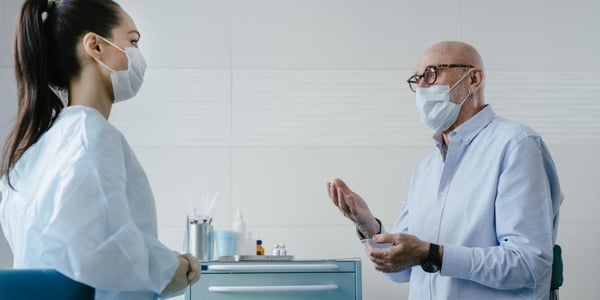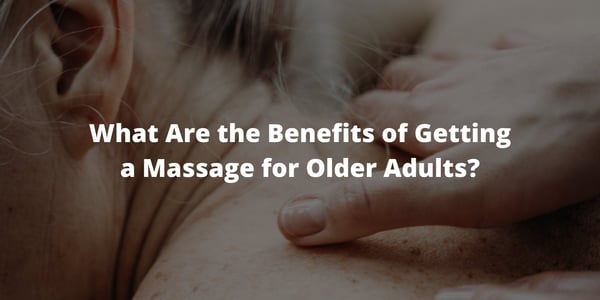Feeling cold is a common complaint among many people, particularly as we get older. If you find...
What Are Age Spots: Prevention and Treatment
One common occurrence associated with getting older is the development of age spots. These spots, also known as liver spots or sunspots, don't have to be a permanent part of our lives.
By combining preventive measures and appropriate treatments, you can take control of your skin's health and appearance. Say goodbye to age spots and hello to a more youthful and vibrant complexion! In the following sections, we will share strategies, offering valuable insights and helpful tips for achieving healthy, age-spot-free skin.
What Are Age Spots?
Of course, you need to know what they are before you can treat them.
Age spots, scientifically called solar lentigines, are large freckle-like spots on the skin. They tend to appear on areas of the skin that have been exposed to the sun for long periods of time. Overexposure to ultraviolet (UV) radiation from the sun leads to an increase in melanin production, causing these pigmented spots to form.
Many people also refer to age spots as sun spots, liver spots, and more. They will appear in single spots, or you will find a few of them clustered together. Although age spots are more common in older individuals, younger people who have had excessive sun exposure or used tanning beds can also develop them.
There is a misconception that these spots are cancerous, but that is not the case. They are harmless, but you can always prevent and treat them with the proper steps. We recommend that you consult a dermatologist when you notice these spots on your skin.
Preventing Age Spots
If you don't want to get these spots, you can take steps to help prevent them from appearing. The cause of these spots is a lot of exposure to the sun. Therefore, your best bet in preventing these spots is to opt for sun protection.
Whenever you go out, we recommend that you wear sunscreen to protect areas exposed to the sun. It will help ensure that the harmful UV rays don't cause harm to your skin. Besides that, you should also indulge in general skincare practices to protect your skin. Click here to learn more about staying safe in the sun!
Even if you take all these precautions, there is no guarantee that age spots will not appear. However, once they do, you can also opt for various treatments to reduce their appearance on your body.
Treating Age Spots
Now that you are familiar with prevention methods, there are different ways you can treat age spots. Remember that not all solutions will work for everyone. It is a process of trial and error, and you will have to find the treatment that works best for you:
-
Medical Procedures
There are a few medical procedures you can undertake to reduce or eliminate age spots. You should consult your dermatologist or medical professional before taking this step. They will recommend the treatment that will be the best for your skin.
Here are some medical procedure options you have at your disposal:
-
Chemical Peel
A chemical peel will remove the outer layer of the skin with age spots so that new skin can begin growing. Recovery can take between four days and two weeks. Besides that, you may experience side effects such as mild swelling, burning, dryness, and even redness.
-
IPL Treatment
IPL (intense pulsed light) treatment emits light waves that pass through your skin. As the light passes through the skin, it will break up and eliminate the age spots. The best part about this treatment is that you can return to your daily routine after it, but you might experience some mild swelling or redness.
-
Laser Treatment
The laser treatment will utilize specific light wavelengths to remove the age spots. Your skin might temporarily darken after the treatment. So, you will have to keep it clean to heal as soon as possible.
-
Dermabrasion
Dermabrasion will sand away the outer layers of your skin so that new skin can grow. Remember that it will take three months for you to heal after this treatment. So, be sure to consult a medical professional before you opt for it.
-
-
Prescription Medication
Another option you have at your disposal is to opt for prescription medication. For example, a dermatologist can offer you a bleaching cream to help the age spots fade away with time. Such prescriptions can include creams, such as tretinoin, retinoids, and much more.
When you use this treatment, it can take a few months for the spots to fade away. Besides that, your skin will also become more sensitive to UV damage with time. Therefore, we recommend that you wear sunscreen after the treatment, even if the day is overcast.
-
OTC Treatments
Finally, you can opt for OTC treatments for age spots. Such creams lotions are not as strong as prescription medications. However, they can help reduce age spots while removing any excess pigmentation you might have.
Remember that you don't need a doctor to get these treatments. However, they are generally not as effective as something your medical professional would prescribe to you. Therefore, we recommend that if you are trying to treat age spots, you should get OTC treatments that contain alpha hydroxyl acid, glycolic acid, and deoxyarbutin.
You can ask your dermatologist about the kind of creams you can opt for to help reduce your age spots. They will recommend you the best option, and you can get those.
Keep in mind that they are not overnight fixes. You must use the OTC treatments consistently to get the desired results.
We recommend that you opt for a medical professional and consult them first. If there are any underlying issues, you will get to know about those too. Besides that, they will offer you an expert opinion on how you can reduce your age spots. So again, be sure to follow the doctor's orders for your age spots.
Let us know in the comments below - Have you tried any of these age spot treatments? What was your experience?







